 During the formation years of my basic culinary education, insights on Vietnamese Cuisine were not taught as part of the curriculum despite its close proximity to Singapore. Vietnam then was one of the ten poorest countries in the world and had just begun to embrace economic reform. Battered by war in the last thirty years with three major conflicts, the conservative country had lagged much behind in economic development along with its regional neighbours in South East Asia. The result was an exodus of Vietnamese refugees who took among with them, their culinary heritage to countries who adopted them. Predominantly, many settled in France and USA, setting up little enclaves in different parts around the countries.
During the formation years of my basic culinary education, insights on Vietnamese Cuisine were not taught as part of the curriculum despite its close proximity to Singapore. Vietnam then was one of the ten poorest countries in the world and had just begun to embrace economic reform. Battered by war in the last thirty years with three major conflicts, the conservative country had lagged much behind in economic development along with its regional neighbours in South East Asia. The result was an exodus of Vietnamese refugees who took among with them, their culinary heritage to countries who adopted them. Predominantly, many settled in France and USA, setting up little enclaves in different parts around the countries.My early memories of the few Vietnamese restaurants in Singapore were the former Mekong and Southern Village Restaurants which both have since closed. Their menu then only offered a small variety of Vietnamese dishes and was heavily complemented with other Chinese dishes. Vietnamese cuisine was never really seriously taken locally until the evolution of new and trendy Pho restaurants in the last five years like Pho Hoa and Le Viet. The country was rebuilding from the war and little could be done by the government then to promote the cuisine to the rest of the world. The refugees however took their own initiative to do it in the countries that have given them a new hope of life.
 My first real impression of Vietnamese food was in Nice, South of France. Three weeks into a new assignment in Monaco, my palate was homesick and I was craving for South East Asian food. I hop over to Nice during the weekend and right in front of the train station was a cluster of Pho shops. That steaming hot bowl of Pho Bo Tai (Fresh rice Noodles in a spiced beef broth with thin slices of raw beef) with plump bean sprouts, fresh coriander, basil, lime and chilies was comfort food.
My first real impression of Vietnamese food was in Nice, South of France. Three weeks into a new assignment in Monaco, my palate was homesick and I was craving for South East Asian food. I hop over to Nice during the weekend and right in front of the train station was a cluster of Pho shops. That steaming hot bowl of Pho Bo Tai (Fresh rice Noodles in a spiced beef broth with thin slices of raw beef) with plump bean sprouts, fresh coriander, basil, lime and chilies was comfort food.


The cold summer rolls with nuoc cham or sweet bean sauce was a reminiscent of our local popiah. My stomach was appeased and palate satisfied. Since then, I have had many wonderful experiences of Vietnamese Cuisines from Avenue Choisy and Belleville in Paris, France to Texas, Florida and California in USA. Though I had tremendously enjoyed eating Vietnamese Cuisines during my travels, there was a communication problem with people whom I was served by. I never really had a good understanding of the cuisine due to language barriers and Vietnamese were generally humbly shy to express themselves or to talk about their food.
 Things changed in 1999 when I stepped into The Slanted Door restaurant in San Francisco’s Mission District. The Executive Chef, Charles Phan was a Vietnamese immigrant who though was trained as an architect at UC Berkeley, became a self taught chef with inspirations mainly from childhood years in former Saigon (present day Ho Chi Minh City) and from his mum, who was widely appreciated for her culinary prowess in the extended Phan family. His passion for food was further cultivated during the formative years of his basic education where he waited at tables for extra income to pay for school fees. At The Slanted Door, Chef Charles exhibited classical culinary techniques of creating Vietnamese flavours in a modern restaurant environment supported by ecologically and organic friendly produce through the Bay Area’s artisan producers. After the meal, I spoke with Charles who shared some insights on his style of Vietnamese Cuisine and philosophy of running a restaurant. I was convinced that there was much more to discover beyond what he could explain in that twenty minutes.
Things changed in 1999 when I stepped into The Slanted Door restaurant in San Francisco’s Mission District. The Executive Chef, Charles Phan was a Vietnamese immigrant who though was trained as an architect at UC Berkeley, became a self taught chef with inspirations mainly from childhood years in former Saigon (present day Ho Chi Minh City) and from his mum, who was widely appreciated for her culinary prowess in the extended Phan family. His passion for food was further cultivated during the formative years of his basic education where he waited at tables for extra income to pay for school fees. At The Slanted Door, Chef Charles exhibited classical culinary techniques of creating Vietnamese flavours in a modern restaurant environment supported by ecologically and organic friendly produce through the Bay Area’s artisan producers. After the meal, I spoke with Charles who shared some insights on his style of Vietnamese Cuisine and philosophy of running a restaurant. I was convinced that there was much more to discover beyond what he could explain in that twenty minutes.
 During my post graduate studies at the Culinary Institute of America in Napa Valley, Greg Drescher, Director of Continuing Education, introduced me to his wife, Mai Pham. This lady was another culinary icon for Vietnamese Cuisine in the Sacramento region of California. Mai Pham is the chef owner of Lemon Grass Restaurant and a well respected authority in culinary journalism to many different national publications like the SF Chronicle and Los Angeles Times, culinary magazines like Gourmet and Bon Appetit. She has published two books on Vietnamese Cuisine and through her words of encouragement; I knew experiencing this cuisine first hand is a must in the country itself where it originated. Through her book, “Pleasures of the Vietnamese Table”, Mai Pham brought answers to the many questions I was dying to ask about Vietnamese Cuisine. Her insights and detailed explanation on the way food is appreciated in her native country fueled the keenness in me to visit and discover more of this phenomenal cuisine that was beginning to achieve global recognition through chefs like Mai Pham and Charles Phan.
During my post graduate studies at the Culinary Institute of America in Napa Valley, Greg Drescher, Director of Continuing Education, introduced me to his wife, Mai Pham. This lady was another culinary icon for Vietnamese Cuisine in the Sacramento region of California. Mai Pham is the chef owner of Lemon Grass Restaurant and a well respected authority in culinary journalism to many different national publications like the SF Chronicle and Los Angeles Times, culinary magazines like Gourmet and Bon Appetit. She has published two books on Vietnamese Cuisine and through her words of encouragement; I knew experiencing this cuisine first hand is a must in the country itself where it originated. Through her book, “Pleasures of the Vietnamese Table”, Mai Pham brought answers to the many questions I was dying to ask about Vietnamese Cuisine. Her insights and detailed explanation on the way food is appreciated in her native country fueled the keenness in me to visit and discover more of this phenomenal cuisine that was beginning to achieve global recognition through chefs like Mai Pham and Charles Phan.
 Things changed in 1999 when I stepped into The Slanted Door restaurant in San Francisco’s Mission District. The Executive Chef, Charles Phan was a Vietnamese immigrant who though was trained as an architect at UC Berkeley, became a self taught chef with inspirations mainly from childhood years in former Saigon (present day Ho Chi Minh City) and from his mum, who was widely appreciated for her culinary prowess in the extended Phan family. His passion for food was further cultivated during the formative years of his basic education where he waited at tables for extra income to pay for school fees. At The Slanted Door, Chef Charles exhibited classical culinary techniques of creating Vietnamese flavours in a modern restaurant environment supported by ecologically and organic friendly produce through the Bay Area’s artisan producers. After the meal, I spoke with Charles who shared some insights on his style of Vietnamese Cuisine and philosophy of running a restaurant. I was convinced that there was much more to discover beyond what he could explain in that twenty minutes.
Things changed in 1999 when I stepped into The Slanted Door restaurant in San Francisco’s Mission District. The Executive Chef, Charles Phan was a Vietnamese immigrant who though was trained as an architect at UC Berkeley, became a self taught chef with inspirations mainly from childhood years in former Saigon (present day Ho Chi Minh City) and from his mum, who was widely appreciated for her culinary prowess in the extended Phan family. His passion for food was further cultivated during the formative years of his basic education where he waited at tables for extra income to pay for school fees. At The Slanted Door, Chef Charles exhibited classical culinary techniques of creating Vietnamese flavours in a modern restaurant environment supported by ecologically and organic friendly produce through the Bay Area’s artisan producers. After the meal, I spoke with Charles who shared some insights on his style of Vietnamese Cuisine and philosophy of running a restaurant. I was convinced that there was much more to discover beyond what he could explain in that twenty minutes. During my post graduate studies at the Culinary Institute of America in Napa Valley, Greg Drescher, Director of Continuing Education, introduced me to his wife, Mai Pham. This lady was another culinary icon for Vietnamese Cuisine in the Sacramento region of California. Mai Pham is the chef owner of Lemon Grass Restaurant and a well respected authority in culinary journalism to many different national publications like the SF Chronicle and Los Angeles Times, culinary magazines like Gourmet and Bon Appetit. She has published two books on Vietnamese Cuisine and through her words of encouragement; I knew experiencing this cuisine first hand is a must in the country itself where it originated. Through her book, “Pleasures of the Vietnamese Table”, Mai Pham brought answers to the many questions I was dying to ask about Vietnamese Cuisine. Her insights and detailed explanation on the way food is appreciated in her native country fueled the keenness in me to visit and discover more of this phenomenal cuisine that was beginning to achieve global recognition through chefs like Mai Pham and Charles Phan.
During my post graduate studies at the Culinary Institute of America in Napa Valley, Greg Drescher, Director of Continuing Education, introduced me to his wife, Mai Pham. This lady was another culinary icon for Vietnamese Cuisine in the Sacramento region of California. Mai Pham is the chef owner of Lemon Grass Restaurant and a well respected authority in culinary journalism to many different national publications like the SF Chronicle and Los Angeles Times, culinary magazines like Gourmet and Bon Appetit. She has published two books on Vietnamese Cuisine and through her words of encouragement; I knew experiencing this cuisine first hand is a must in the country itself where it originated. Through her book, “Pleasures of the Vietnamese Table”, Mai Pham brought answers to the many questions I was dying to ask about Vietnamese Cuisine. Her insights and detailed explanation on the way food is appreciated in her native country fueled the keenness in me to visit and discover more of this phenomenal cuisine that was beginning to achieve global recognition through chefs like Mai Pham and Charles Phan. Vietnamese Cuisine: The Insight



The whole Indochina region and Thailand share many common ingredients and seasonings in their respective countries’ cuisine. The region has a common embrace of the influence of Chinese cuisine and its culinary techniques due to the migration of southern Chinese in the last few centuries. Thai cuisine however went on to take influences from India through settlers who came via Myanmar.
 Vietnam instead benefited from the French colonization of Indochina which had a positive influence in introducing new foods and culinary ideas to Vietnamese cooks. The French had imparted their culinary passion and knowledge to the Vietnamese during which the locals develop a taste for breads, pates, pastries, wine, cheese, crepes, salads, sausages and beef.
Vietnam instead benefited from the French colonization of Indochina which had a positive influence in introducing new foods and culinary ideas to Vietnamese cooks. The French had imparted their culinary passion and knowledge to the Vietnamese during which the locals develop a taste for breads, pates, pastries, wine, cheese, crepes, salads, sausages and beef.While flavours of Thai cuisine has often been described as bold, dynamic and in some recipes, extreme, Vietnamese foods are perceived to be more subtle and refreshing. The most important ingredient in a Vietnamese kitchen is Nuoc Mam or fish sauce which is the one solution seasoning ingredient for many recipes. The art of making fish sauce were taught by the early Chinese immigrants and today, Vietnam makes one of the best fish sauces in the world. Blessed with a bountiful coastline, fish sauce produce in Vietnam are more aromatic and mellow than the Thai variety which sometimes can be too harsh.



Vietnam has one of the most sophisticated and exciting cuisines in the world. Its historical influences and well blessed geographical attributes have established a cuisine rich in variety and vibrant in color and freshness. Vietnam's culinary heritage was established with elements from three of the world's most celebrated cuisines: French, Chinese, and Indian. Paired with an acute sense of aesthetics and presentation, these influences give Vietnamese cuisine a tremendous palate of flavors, textures, and colors.



The food of Vietnam, with its fresh, fragrant aromas and delicate, light, yet complex, flavors are also popular in other countries. As with Chinese or Thai cuisine, Vietnamese dishes combine five flavors: salty, sweet, hot, bitter and sour. These flavors are balanced with pungent fish sauce, fresh aromatic herbs, and crunchy, crispy textures derived from immaculately sliced vegetables, fruits and cooked rice.



Vietnamese cooking reflects many Asian cultures, incorporating Chinese-style cooking techniques and sauces along with lighter, milder versions of Indian- and Thai-style curries. Despite modernization, many Vietnamese cooks employ the charcoal-fired grilling methods as well as charcoal fired stoves for stewing and sautéing.
Outlined as a long skinny country stretching from north to south, Many Vietnamese say that their country resembles two baskets of rice on each end of a carrying pole. The two "baskets", regions known simply as the North and South, are both homes to extensive river deltas; the Red and Mekong Rivers respectively. They are connected by a long, narrow, mountainous area known as the Central Highlands, or Hue, region. Each region contributes in a different way in Vietnam's culinary tradition.



In the North, colder climate limits the variety of spices and produce that is available, and as a result, the food is lighter, and less spicy than in the Center and South regions. Black pepper is the dominant spice used in northern Vietnamese cooking. Sharing a common border with China in the north introduced the cooking technique of using a wok to sauté, steam and deep fry foods. Though not as agriculturally rich and fertile like the south, many of Vietnam’s greatest dishes originated from the north. One the most famous dishes is “pho” which is rice noodles served in a rich beef stock with simple garnishes and fresh herbs. Other dishes include Cha Ca (Dill marinated grilled fish), Bun Cha (Grilled pork with rice noodles and fish sauce dressing) and several crab inspired recipes despite not having an extensive coastline like the central or south.
 The Central Highlands, where Hue, the former imperial capital of the Vietnamese kings is located, features a highly decorative, heavier and very spicy cuisine, reflecting the past pleasures of the country's royalty and the abundance of spices this region's mountainous terrain affords. The noodles in this region are thicker, and the accompanying broths are often tinged with fresh red chilies. During the reign of the Nguyen dynasty from early 1800s to 1900s, Hue is known for its royal cuisine. In lavish banquets, the menus easily run into more than fifty dishes each. Many of these dishes are skillfully, artfully and elaborately handcrafted from scratch. Meals often consist of small portions of the many dishes laboriously cooked with love and pride.
The Central Highlands, where Hue, the former imperial capital of the Vietnamese kings is located, features a highly decorative, heavier and very spicy cuisine, reflecting the past pleasures of the country's royalty and the abundance of spices this region's mountainous terrain affords. The noodles in this region are thicker, and the accompanying broths are often tinged with fresh red chilies. During the reign of the Nguyen dynasty from early 1800s to 1900s, Hue is known for its royal cuisine. In lavish banquets, the menus easily run into more than fifty dishes each. Many of these dishes are skillfully, artfully and elaborately handcrafted from scratch. Meals often consist of small portions of the many dishes laboriously cooked with love and pride.The tropical South is hot and humid, and its fertile earth makes it ideal for growing a huge variety of vegetables, fruits, and livestock.
 The dishes in this region are particularly vibrant and robust due to the liberal use of shallots, garlic and spices. With a palette that is partial to sweet and sour flavours, a lot more fresh herbs are consumed than their northern or central counterparts. Sweet Basil, Rau Ram (Vietnamese mint or laksa leaves), Saw Leaf Herb , Mint and many other tropical herbs grow in abundance. It is here where the French and Indian influences are most prominent. Under colonization, the French introduced white potatoes, asparagus, tarragon, and shallots to this region, and they are still grown today. French bread is another surprise in this small area of Southeast Asia. Southern Vietnam was once a common stop for Indian traders before their journey back west, and they left a taste for curried dishes behind. Seafood is a natural staple for people in the South, considering the vast areas of shoreline there.
The dishes in this region are particularly vibrant and robust due to the liberal use of shallots, garlic and spices. With a palette that is partial to sweet and sour flavours, a lot more fresh herbs are consumed than their northern or central counterparts. Sweet Basil, Rau Ram (Vietnamese mint or laksa leaves), Saw Leaf Herb , Mint and many other tropical herbs grow in abundance. It is here where the French and Indian influences are most prominent. Under colonization, the French introduced white potatoes, asparagus, tarragon, and shallots to this region, and they are still grown today. French bread is another surprise in this small area of Southeast Asia. Southern Vietnam was once a common stop for Indian traders before their journey back west, and they left a taste for curried dishes behind. Seafood is a natural staple for people in the South, considering the vast areas of shoreline there.Ultimately, the three key foundations of Vietnamese cuisine are freshness, creativity, and presentation.
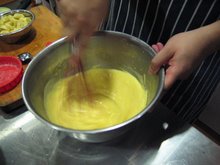

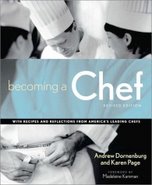
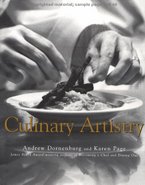


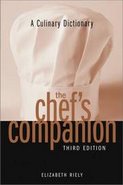

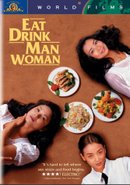
.jpg)
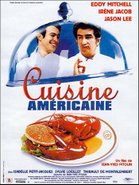


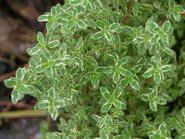

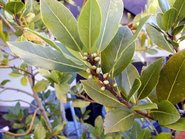
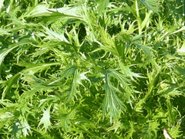
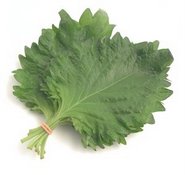
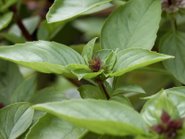
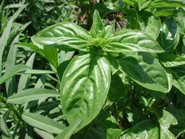
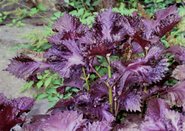
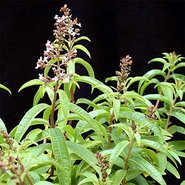
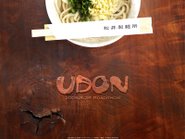


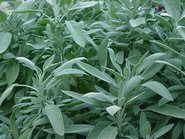
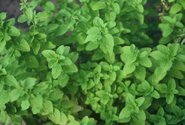

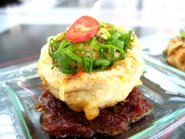


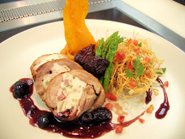
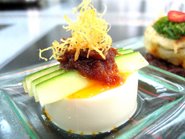
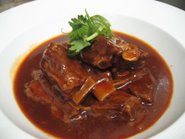
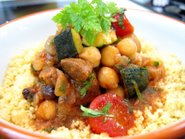







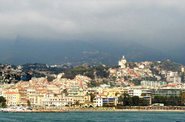





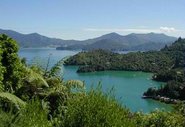




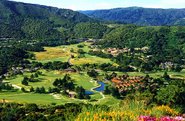





















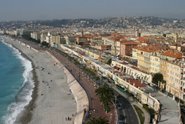

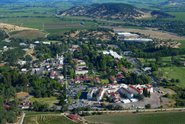













No comments:
Post a Comment